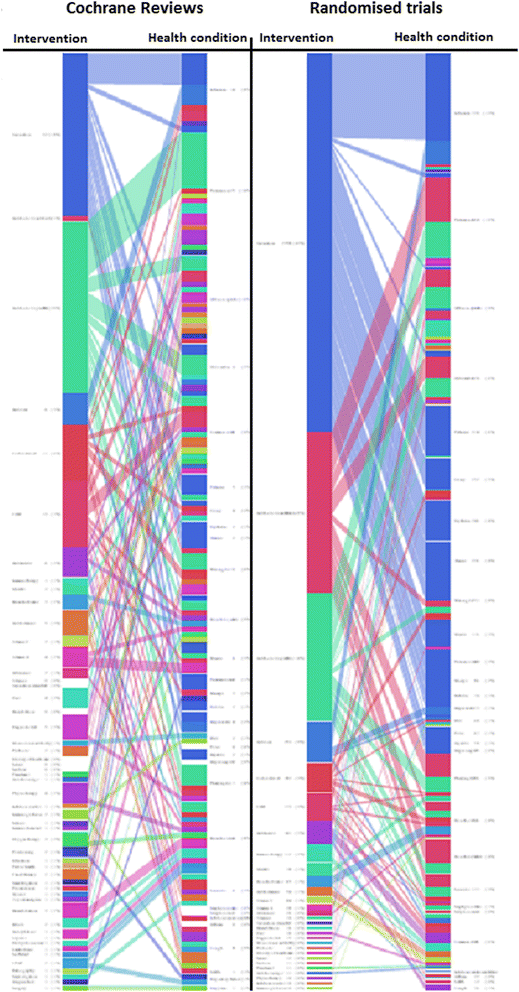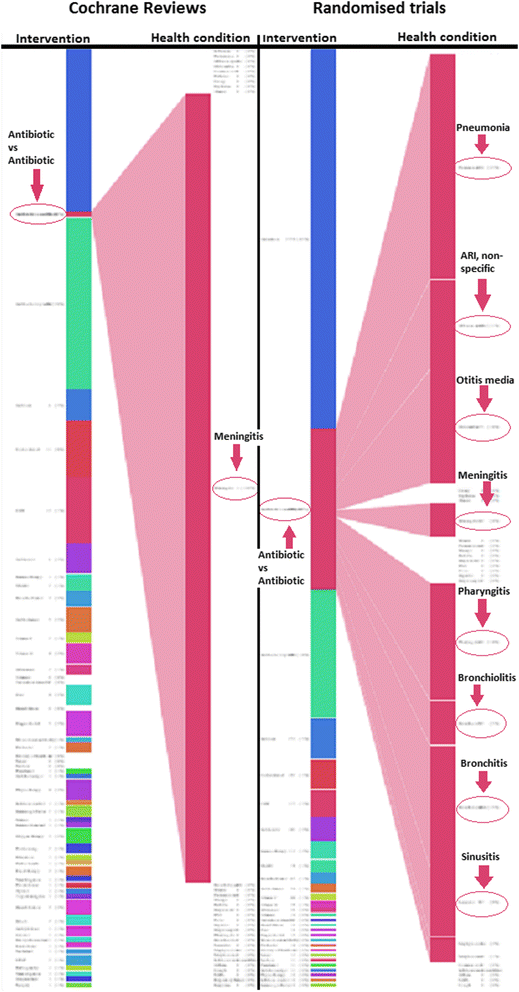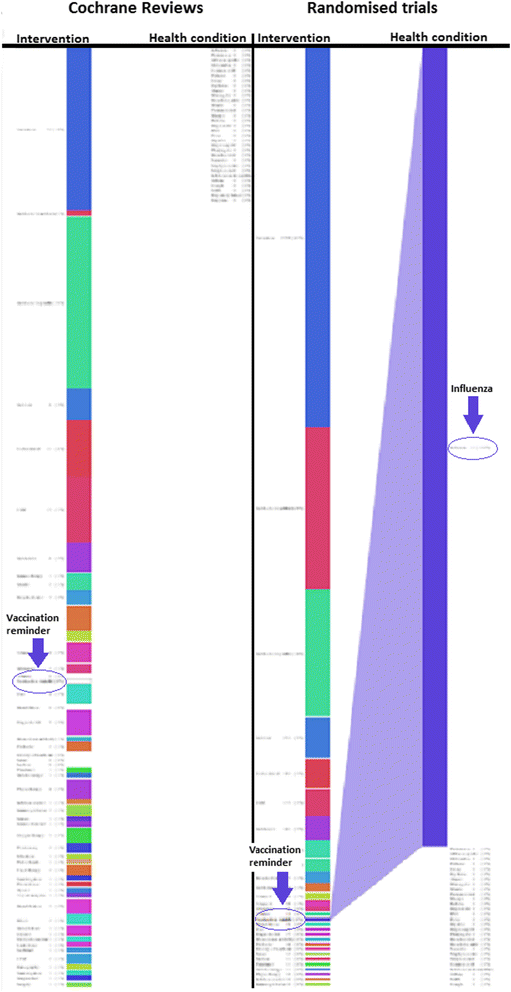Determining the gaps between Cochrane reviews and trials of effectiveness of interventions for acute respiratory infections: an audit
- PMID: 28407780
- PMCID: PMC5390471
- DOI: 10.1186/s13643-017-0472-0
Determining the gaps between Cochrane reviews and trials of effectiveness of interventions for acute respiratory infections: an audit
Abstract
Background: Cochrane primarily aims to systematically review trials of effectiveness that are important to inform clinical decisions. Editorial groups support authors to achieve high-quality reviews and prioritise review proposals in their clinical domain that are submitted or elicited. Prioritising proposals requires two approaches, identifying (1) clinical practises for which the evidence of effectiveness is uncertain and (2) interventions in which there are trials of effectiveness (especially randomised controlled trials (RCTs)) not systematically reviewed. This study addresses this second approach for the Cochrane Acute Respiratory Infections Group (CARIG) in order to identify RCTs of acute respiratory infections that have not been systematically reviewed.
Methods: We exported, on the 9th of September 2014, and then compared the group's trials register of RCTs against a list of current Cochrane ARI (systematic) Reviews to identify gaps in topics (the same intervention and health condition) where completed trials have not been systematically reviewed. We assigned a principle intervention and health condition to each of 157 Cochrane reviews (CRs) and 5393 RCTs.
Results: A majority of topics had been systematically reviewed; however, a substantial number (2174 or 41%) of RCTs were not included in any review. The topic that had been systematically reviewed the most was antibiotic vs placebo for pneumonia with 11 CRs and 205 RCTs. The topic that was the subject of most RCTs was vaccination for influenza with 525 RCTs and 6 CRs. Also, 6 CRs had no RCTs ('empty reviews').
Conclusions: We identified many RCT topics that have not been systematically reviewed. They need to be addressed in a separate process to establish their priority to clinicians.
Keywords: Cochrane reviews; Research gaps; Research prioritisation.
Figures



References
-
- Cochrane: about us. http://www.cochrane.org/about-us. Accessed 22 Dec 2016.
-
- Cochrane Acute Respiratory Infections: about us. http://ari.cochrane.org/welcome. Accessed 22 Dec 2016.
Publication types
MeSH terms
Substances
LinkOut - more resources
Full Text Sources
Other Literature Sources
Medical

